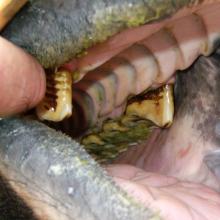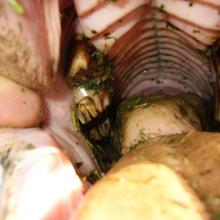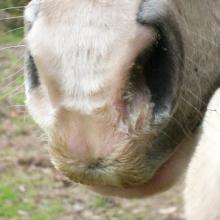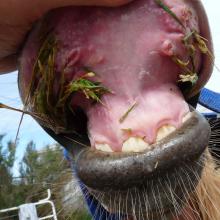
THE NATURE OF A HORSE
Scientific research suggests that horses were first domesticated by humans approximately 5500 years ago. Since that time humans have ridden, kept and selectively bred horses all in over the world. On an evolutionary basis, very little time has passed since the beginning of the human-horse relationship, which means that the modern equine has not fully adapted to man-made environments such as stables and small paddocks. Combined with the effects of selective breeding, the modern horse requires human intervention to cope with its environment. Not unlike humans, horses rely on the function of their teeth for food ingestion, therefore it is in their best interest that their teeth are in the best possible condition for the duration of their lifetime.
Equidae originally consumed a diet of forage which consisted of many types of grasses. They would graze for up to 18 hours per day, standing upright and using their long necks to reach food on the ground. As grazing animals they would constantly be on the move, covering many acres of land and continually looking for predators. The position of their large eyes gives them a range of vision of approximately 340° which makes the horse particularly well-equipped to survey its surroundings. It is natural for all modern horses to consume 2-2.5% of their body weight in forage every day. This requires large hypsodont teeth and vigorous grinding. Over time, the crowns of the teeth wear away and so horses require continuous tooth replacement by way of roots that continue to erupt through the gums for their entire life.
Today’s horses have not lost the instinctive desire to live as their ancestors did. Furthermore all species belonging to the genus Equus, are still classed as non-ruminant herbivores. Their digestive system is somewhat fragile and when disrupted or overwhelmed can result in colic; the most common cause of death in horses. Diets which consist of grain and/or short-fibred forage are likely to cause uneven tooth eruption and the development of sharp edges, particularly on the buccal molar arcades. More severe problems such as bite malocclusions may also develop. In order to minimise the effects of uneven tooth eruption, all horses need to be treated by an equine dental practitioner.
Selecting feeds that suit horses as individuals is vital for correctly meeting their nutritional needs. But regardless of any horses' diet, whether it be mostly hay, grasses or grains, maintaining optimum dental health allows a horse to maximise their nutritional intake and avoid dental-related pain.
If you would like to access more reading material, visit our association's website National Equine Dental Practitioners Inc.
















